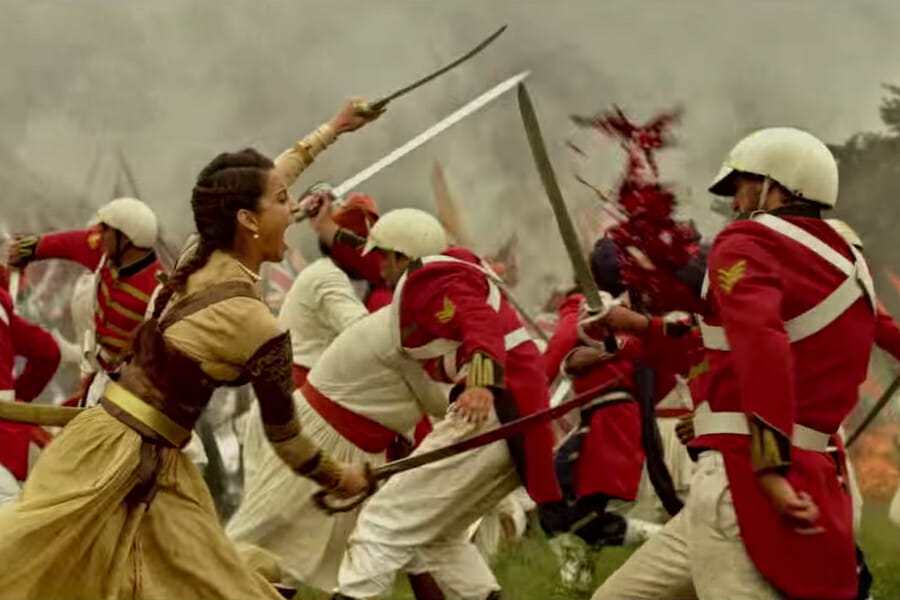
‘Manikarnika’ Review
A woman sedates a rampaging tiger, then preaches that both man and tiger can live in peace when they’re both in their respective lands, rather than intruding on one another. This no-so-subtle anti-colonialism parable serves as the opening scene in Manikarnika: The Queen of Jhansi, co-directed by Radha Krishna Jagarlamudi and Kangana Ranaut.
Ranaut portrays the real-life Queen Laxmibai, wife of King Gangadhar Rao (Jishu Sengupta) of the fortress city of Jhansi, in modern-day Uttar Pradesh. She is no ordinary consort, for she was raised as a warrior. Thus, Laxmibai is one to speak up, rather than stay quiet and fight, rather than submit. The couple soon find themselves surrounded by the British, who have just conquered all of the neighboring kingdoms. Captain Gordon (Edward Sonnenblick) and his troops make themselves feel at home by beating, stealing from and killing the locals. Gangadhar feels helpless to stop them, but soon Laxmibai has to take the reins and things begin to change.
Laxmibai sticks up for her oppressed people and this, as the film trailer foreshadows, leads to an all-out battle with the British. The Queen’s efforts were part of a larger struggle at the time, the Indian Rebellion of 1857. As we find out in the film, the deadliest weapon that the British have is not their modern firearms, but internal divisions in India. Captain Gordon and his ilk pit corrupt kings against those too principled to capitulate, like the film’s heroine, who opines, “When one of your own is a traitor, how do we save you, o motherland?” She tries to rally support for the rebellion, but too many of her fellow monarchs have been bought off by British promises of money and power. It’s not a spoiler to reveal that the rebellion ultimately fails thanks to this tried-and-true colonial tactic of divide-and-conquer, and thus the British would rule India for another century.
Manikarnika is a rousing and fascinating testament to the Indian people’s determination for independence from the most powerful empire in the world at the time. Kangana Ranaut is fantastic, not just in her portrayal of Laxmibai, but as co-director in her directorial debut. She, alongside co-director Radha Krishna Jagarlamudi, are able to create a winning concoction of storytelling, cinematography and background score. Todor Lazarov and Dawid Szatarski choreographed some truly thrilling cavalry and swordsman fight sequences- though I must chastise them for including a scene where a character jumps off a castle turret on horseback- and survives!
It’s a revelation to see not only Laxmibai fighting but all the women of Jhansi. The Queen trained them personally, which in effect doubled Jhansi’s fighting force and thus helped to even the playing field against a 20,000-strong British invading force. It’s fitting that she was named after Laxmi, the consort of Vishnu, the redeeming warrior in his incarnation as Rama. When men and women unite, good fortune will follow. Watching the divided state of India as portrayed in the film also serves as a timely reminder. India remains politically deadlocked by quarreling leaders in different states, which limits its ability to keep up with a united China. If only Queen Laxmibai were on the ballot this May!
